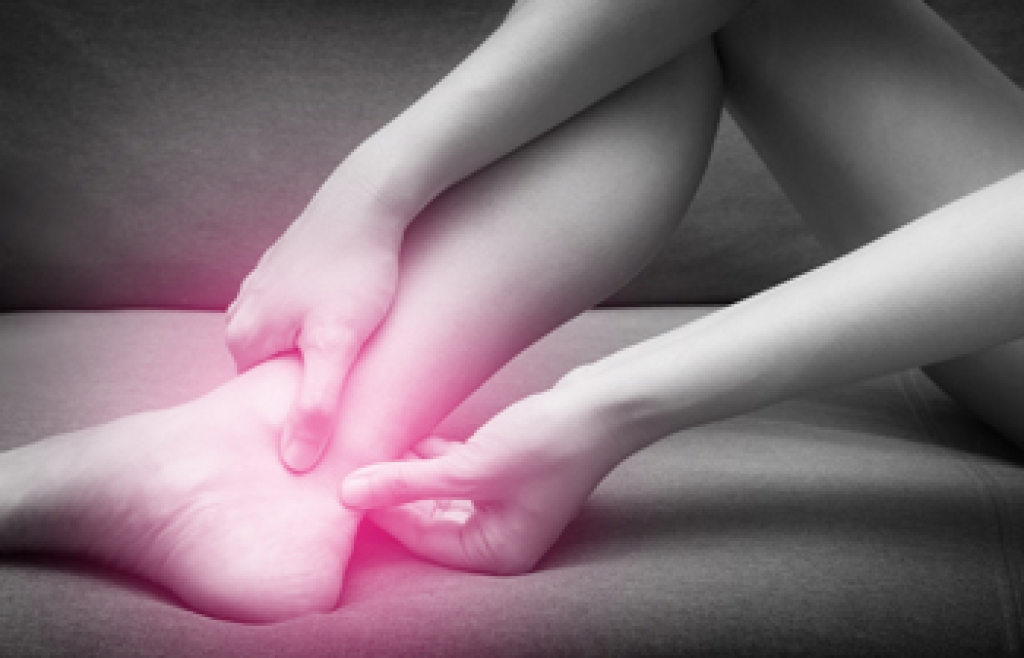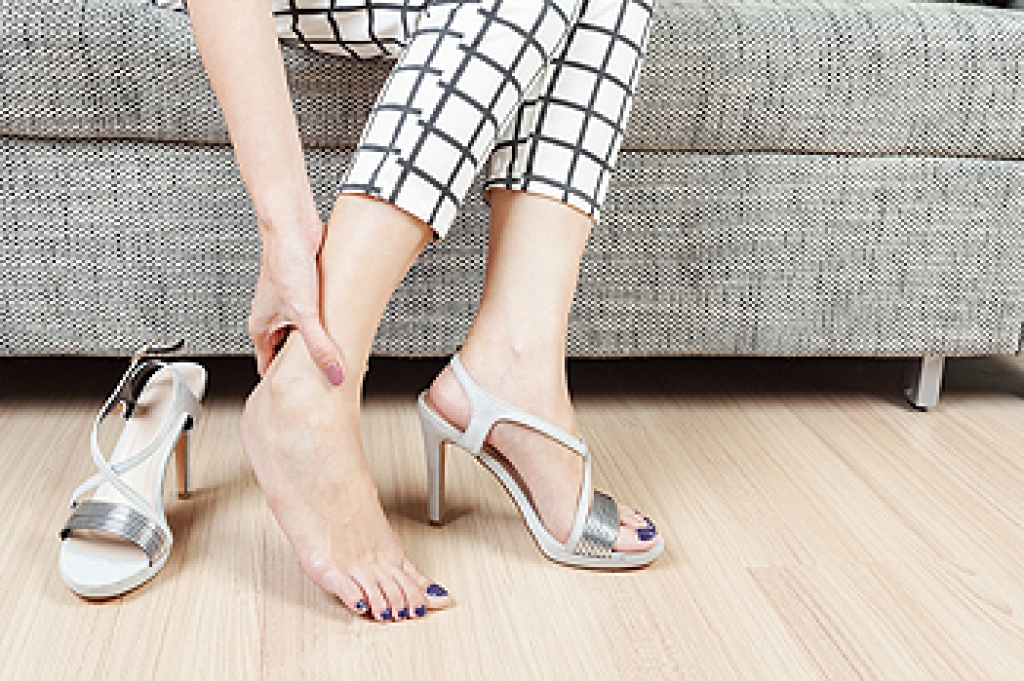Connect With Us
Blog
Blog
Relief from Painful Ingrown Toenails

Ingrown toenails occur when the edge of a toenail grows into the surrounding skin, often due to improper trimming, tight footwear, trauma, or inherited nail shape. They may look red, swollen, or curved into the skin. As inflammation increases, the area can become warm and tender. Many people describe a sharp or throbbing pain when walking or even when light pressure touches the toe. In some cases, drainage or infection can develop. The big toe is the most commonly affected because it endures the greatest pressure inside shoes. A podiatrist can start by examining the toe to determine the severity and confirm whether infection is present. Treatments may include gentle removal of the offending nail edge, relief of trapped pressure, guidance on proper nail care, or a minor procedure to prevent the ingrown side from returning. Early care reduces discomfort and supports faster healing. If you notice persistent pain, redness, or swelling around a toenail, it is suggested that you make an appointment with a podiatrist.
Ingrown toenails can become painful if they are not treated properly. For more information about ingrown toenails, contact Carrie Frame, DPM of West Virginia Foot & Ankle. Our doctor can provide the care you need to keep you pain-free and on your feet.
Ingrown Toenails
Ingrown toenails occur when a toenail grows sideways into the bed of the nail, causing pain, swelling, and possibly infection.
Causes
- Bacterial infections
- Improper nail cutting such as cutting it too short or not straight across
- Trauma to the toe, such as stubbing, which causes the nail to grow back irregularly
- Ill-fitting shoes that bunch the toes too close together
- Genetic predisposition
Prevention
Because ingrown toenails are not something found outside of shoe-wearing cultures, going barefoot as often as possible will decrease the likeliness of developing ingrown toenails. Wearing proper fitting shoes and using proper cutting techniques will also help decrease your risk of developing ingrown toenails.
Treatment
Ingrown toenails are a very treatable foot condition. In minor cases, soaking the affected area in salt or antibacterial soaps will not only help with the ingrown nail itself, but also help prevent any infections from occurring. In more severe cases, surgery is an option. In either case, speaking to your podiatrist about this condition will help you get a better understanding of specific treatment options that are right for you.
If you have any questions, please feel free to contact our office located in Charleston, WV . We offer the newest diagnostic and treatment technologies for all your foot care needs.
Achilles Tendinitis and Heel Pain

Achilles tendinitis is an overuse injury that affects the tendon connecting the calf muscles to the heel bone. When this tendon becomes irritated, it can cause stiffness, swelling, and pain along the back of the ankle or heel. The discomfort often feels worse in the morning or after physical activity such as running, climbing stairs, or playing sports. This condition can develop from suddenly increasing exercise, wearing unsupportive shoes, or having foot structures that place extra stress on the tendon. Rest and stretching can ease early symptoms, while wearing supportive footwear and targeted exercises may help in ongoing cases. Severe or untreated tendinitis can lead to tears in the tendon, making prompt care important. With the right treatment, most people recover well and return to their normal activities. If you have pain in your heel or Achilles tendon, it is suggested that you see a podiatrist for proper care.
Achilles tendon injuries need immediate attention to avoid future complications. If you have any concerns, contact Carrie Frame, DPM of West Virginia Foot & Ankle. Our doctor can provide the care you need to keep you pain-free and on your feet.
What Is the Achilles Tendon?
The Achilles tendon is a tendon that connects the lower leg muscles and calf to the heel of the foot. It is the strongest tendon in the human body and is essential for making movement possible. Because this tendon is such an integral part of the body, any injuries to it can create immense difficulties and should immediately be presented to a doctor.
What Are the Symptoms of an Achilles Tendon Injury?
There are various types of injuries that can affect the Achilles tendon. The two most common injuries are Achilles tendinitis and ruptures of the tendon.
Achilles Tendinitis Symptoms
- Inflammation
- Dull to severe pain
- Increased blood flow to the tendon
- Thickening of the tendon
Rupture Symptoms
- Extreme pain and swelling in the foot
- Total immobility
Treatment and Prevention
Achilles tendon injuries are diagnosed by a thorough physical evaluation, which can include an MRI. Treatment involves rest, physical therapy, and in some cases, surgery. However, various preventative measures can be taken to avoid these injuries, such as:
- Thorough stretching of the tendon before and after exercise
- Strengthening exercises like calf raises, squats, leg curls, leg extensions, leg raises, lunges, and leg presses
If you have any questions please feel free to contact our office located in Charleston, WV . We offer the newest diagnostic tools and technology to treat your foot and ankle needs.
Recognizing a Fungal Toenail Infection

A toenail infection, known as onychomycosis when caused by fungus, can affect the way your nails look and feel. Infected toenails often become thick, brittle, and discolored, turning yellow, brown, or even white in appearance. The surface may develop ridges, crumble at the edges, or lift away from the nail bed. Warm and damp environments, such as heavy work boots or locker room floors, can encourage fungal growth, making toenails particularly vulnerable. In addition to fungal infections, bacteria can also infect the nail, leading to swelling, redness, and discomfort around the nail fold. These changes may interfere with walking, cause pain when wearing shoes, or increase the risk of further foot problems. A podiatrist can perform an examination, remove a small sample of nail if needed, and determine the cause of the infection. Early treatment helps prevent complications and restores nail health. If you believe you have a toenail infection, it is suggested that you make an appointment with a podiatrist for a diagnosis and treatment.
For more information about treatment, contact Carrie Frame, DPM of West Virginia Foot & Ankle. Our doctor can provide the care you need to keep you pain-free and on your feet.
Toenail Fungus Treatment
Toenail fungus is a condition that affects many people and can be especially hard to get rid of. Fortunately, there are several methods to go about treating and avoiding it.
Antifungals & Deterrence
Oral antifungal medicine has been shown to be effective in many cases. It is important to consult with a podiatrist to determine the proper regiment for you, or potentially explore other options.
Applying foot powder on the feet and shoes helps keep the feet free of moisture and sweat.
Sandals or open toed shoes – Wearing these will allow air movement and help keep feet dry. They also expose your feet to light, which fungus cannot tolerate. Socks with moisture wicking material also help as well.
If you have any questions please contact our office located in Charleston, WV . We offer the newest diagnostic and treatment technologies for all your foot and ankle needs.
High Heels and Insoles
 When specific types of high heels are worn, they may give the legs and feet the illusion of looking leaner and elegant, despite the possible foot problems that may develop. These problems can include the formation of bunions, hammertoe, and ingrown toenails. It is important that high heels fit properly, and the shoe size may need to increase if weight is gained. Research has indicated that feet may feel more comfortable when high heels are made with thicker heels. This is helpful in providing the balance that is needed to perform daily activities, in addition to providing a more even distribution of body weight. Many patients choose to wear insoles, which may prevent foot pain. If more information is needed about the types of high heels to purchase, it is strongly suggested that you speak to a podiatrist, who can address any concerns you may have.
When specific types of high heels are worn, they may give the legs and feet the illusion of looking leaner and elegant, despite the possible foot problems that may develop. These problems can include the formation of bunions, hammertoe, and ingrown toenails. It is important that high heels fit properly, and the shoe size may need to increase if weight is gained. Research has indicated that feet may feel more comfortable when high heels are made with thicker heels. This is helpful in providing the balance that is needed to perform daily activities, in addition to providing a more even distribution of body weight. Many patients choose to wear insoles, which may prevent foot pain. If more information is needed about the types of high heels to purchase, it is strongly suggested that you speak to a podiatrist, who can address any concerns you may have.
High heels have a history of causing foot and ankle problems. If you have any concerns about your feet or ankles, contact Carrie Frame, DPM from West Virginia Foot & Ankle. Our doctor can provide the care you need to keep you pain-free and on your feet.
Effects of High Heels on the Feet
High heels are popular shoes among women because of their many styles and societal appeal. Despite this, high heels can still cause many health problems if worn too frequently.
Which Parts of My Body Will Be Affected by High Heels?
- Ankle Joints
- Achilles Tendon – May shorten and stiffen with prolonged wear
- Balls of the Feet
- Knees – Heels cause the knees to bend constantly, creating stress on them
- Back – They decrease the spine’s ability to absorb shock, which may lead to back pain. The vertebrae of the lower back may compress.
What Kinds of Foot Problems Can Develop from Wearing High Heels?
- Corns
- Calluses
- Hammertoe
- Bunions
- Morton’s Neuroma
- Plantar Fasciitis
How Can I Still Wear High Heels and Maintain Foot Health?
If you want to wear high heeled shoes, make sure that you are not wearing them every day, as this will help prevent long term physical problems. Try wearing thicker heels as opposed to stilettos to distribute weight more evenly across the feet. Always make sure you are wearing the proper shoes for the right occasion, such as sneakers for exercising. If you walk to work, try carrying your heels with you and changing into them once you arrive at work. Adding inserts to your heels can help cushion your feet and absorb shock. Full foot inserts or metatarsal pads are available.
If you have any questions, please feel free to contact our office located in Charleston, WV . We offer the newest diagnostic and treatment technologies for all your foot care needs.
Blog Archives
- 2025
- 2024
- 2023

